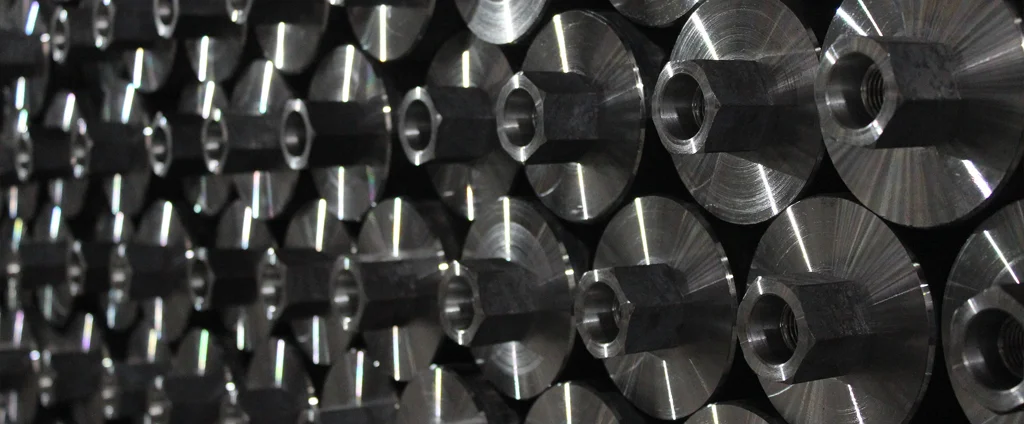SAE/AISI 1030 Carbon Steel (UNS G10300)

SAE/AISI 1030 is a medium-carbon steel known for its balance of strength, machinability, and cost-effectiveness. Commonly used across industries, it is ideal for producing gears, axles, shafts, and other mechanical components that demand moderate strength and reliable performance at a reasonable cost.
| Chemical Composition | ||
|---|---|---|
| Element | Min | Max |
| Iron | 98.67% | 99.13% |
| Carbon | 0.27% | 0.34% |
| Manganese | 0.60% | 0.90% |
| Phosphorous | —— | 0.04% |
| Sulfur | —— | 0.05% |
The following table provides a list of SAE/AISI 1030 properties in both SI and US customary/Imperial units.
Click on the button to switch between Metric and Imperial units.
| Physical Properties | Metric |
|---|---|
| Density | 7850 kg/m3 |
| Mechanical Properties | Metric |
| Tensile Strength (Ultimate) | 520 - 590 MPa |
| Tensile Strength (Yield) | 300 - 490 MPa |
| Young’s Modulus (E) | 190 - 210 GPa |
| Bulk Modulus (K) | 140 GPa |
| Shear Modulus (G) | 80 GPa |
| Elongation at Break | 10 - 30% |
| Poisson’s Ratio (ν) | 0.27 - 0.30 |
| Brinell Hardness | 150 - 180 |
| Thermal Properties | Metric |
| Thermal Conductivity | 52 W/m·K |
| Specific Heat Capacity (Cp) | 486 J/kg·K |
| Coefficient of Thermal Expansion (αL) | 1.17×10-5 1/°C |
| Electrical Properties | Metric |
| Electrical Conductivity | 4.1×106 S/m |
| Electrical Resistivity | 2.4×10-7 Ω·m |
The values in this table are approximate and can vary depending on various factors such as the specific manufacturing process and heat treatment applied to the alloy.
Advantages & Disadvantages of 1030 Carbon Steel
| Advantages | Disadvantages |
|---|---|
| Cost-effective | Limited strength |
| Good machinability | Susceptible to corrosion |
| Good weldability | Limited hardness and wear resistance |
Applications of 1030 Carbon Steel
1030 carbon steel is widely employed in applications that benefit from moderate strength, good machinability, and affordability, including:
- Shafts and Axles: Its combination of strength and machinability makes it suitable for use in shafts and axles for machinery, automotive components, and agricultural equipment.
- Gears and Sprockets: It is often used for manufacturing gears and sprockets that require moderate strength and wear resistance, such as in power transmission systems and mechanical assemblies.
- Bolts and Fasteners: Commonly used for producing bolts, nuts, and other fasteners due to its good machinability and adequate strength for general-purpose fastening applications.
- Machinery Parts: Components like pins, couplings, bushings, and levers are often made from this alloy due to its ease of machining and sufficient mechanical properties for many machinery applications.
- Construction Equipment: Employed in the construction industry for manufacturing various equipment, including crane hooks, chains, and structural components that require moderate strength and durability.
- Hand Tools: Some hand tools like wrenches, pliers, and hammers may utilize this steel due to its affordability, machinability, and sufficient strength for common tooling requirements.
- General Fabrication: Finds applications in general fabrication processes, including welding, cutting, and shaping. It can be used to manufacture frames, brackets, supports, and other structural components.
- Shafts for Wearable Assemblies: In applications where moderate strength and wear resistance are needed, it can be utilized to produce shafts for assemblies such as conveyors, rollers, and bearing systems.
